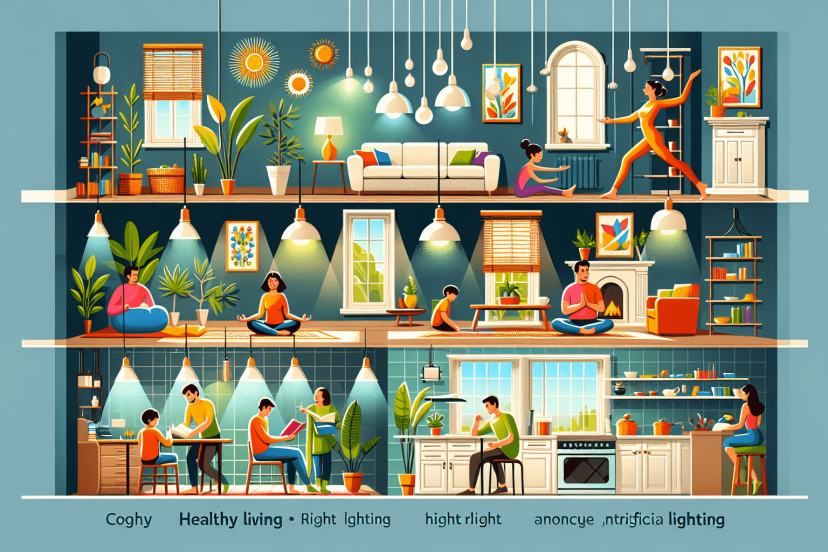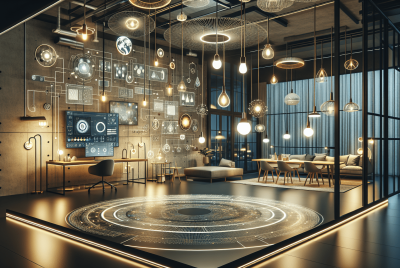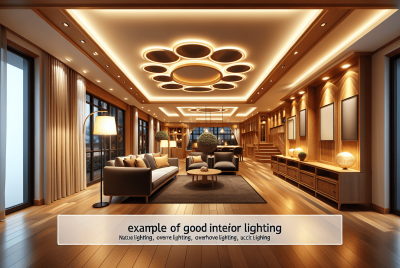What Is The Best Lighting For Home Health?
Are you looking to create a healthy and comfortable atmosphere in your home? The right lighting can have a significant impact on your overall well-being. In this article, we will explore the best lighting options for promoting a healthy environment in your home. By understanding the importance of proper lighting and its effects on our physical and mental health, you can make informed choices to create a space that supports your well-being. Whether you are interested in reducing eye strain, improving sleep quality, or enhancing your mood, we have got you covered!
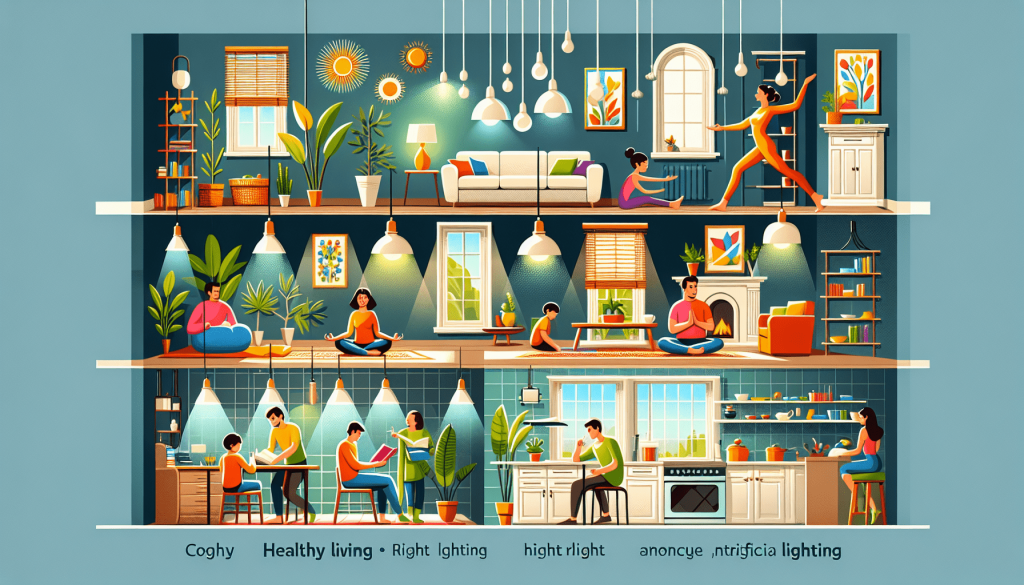
Importance of Lighting in Home Health
Having the right lighting in your home is not only important for creating a warm and inviting atmosphere, but it can also have a significant impact on your physical and mental health. Proper lighting can promote better sleep, reduce eye strain, enhance your mood, and improve overall well-being. In this article, we will explore the importance of lighting in home health, the different types of lighting available, recommended lighting options for different spaces in your home, considerations to keep in mind when choosing lighting, and some helpful lighting design tips to make your home a healthier and happier place.
Impact on Physical Health
The lighting in your home can have a direct impact on your physical health. One of the most important factors to consider is the color temperature of the light. Research has shown that exposure to cool white light (around 5000K) in the morning can help regulate your circadian rhythm, making it easier to wake up and feel alert. On the other hand, warmer light (around 2700K) in the evening can signal to your body that it’s time to wind down and prepare for sleep.
In addition to color temperature, the brightness of the lights also plays a crucial role in your physical health. Insufficient lighting can lead to eye strain and headaches, especially when performing tasks that require focus, such as reading or working on the computer. It is important to have adequate task lighting in areas where you engage in these activities to reduce the risk of eye strain and associated discomfort.
Effect on Mental Health
Lighting also has a significant impact on your mental health and emotional well-being. Natural light, in particular, has been found to have mood-enhancing effects. Exposure to sunlight can increase the production of serotonin, a neurotransmitter that influences mood and promotes a sense of happiness and well-being.
Insufficient exposure to natural light can lead to symptoms of Seasonal Affective Disorder (SAD), a type of depression that typically occurs during the winter months when there is less natural light available. To combat this, make sure to maximize natural light by opening curtains, using sheer window coverings, and strategically placing mirrors to reflect light throughout your home.
Promoting Sleep and Relaxation
Proper lighting is crucial for promoting sleep and relaxation in your home. A well-designed lighting scheme can help create a calming environment in your bedroom and throughout your home. Dimmable lights, for instance, allow you to adjust the intensity of the light according to your preference and the time of day. In the evening, dimming the lights can support the production of melatonin, a hormone that regulates sleep, and signal to your body that it’s time to relax and unwind.
Aside from adjustable lighting, it is important to minimize blue light exposure in the evening. Blue light, emitted by electronic devices and some lighting sources, can interfere with your body’s natural sleep-wake cycle. Consider using warm-colored LED bulbs or installing blue light filters on electronic devices to promote better sleep.
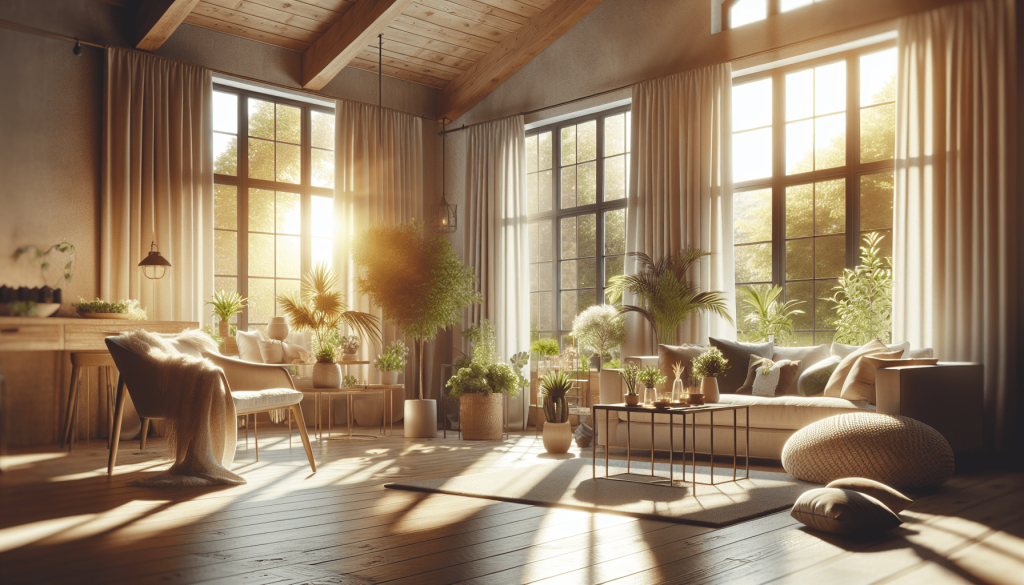
Types of Lighting
There are several different types of lighting that serve specific purposes in your home. Understanding the different types of lighting will help you create a well-rounded lighting plan that meets your needs and enhances your home health.
Natural Lighting
Natural lighting, as the name suggests, refers to the use of sunlight to illuminate your home. It not only provides the best source of light but also offers numerous health benefits. Sunlight contains a full spectrum of colors, which is important for maintaining good vision and overall health. Spending time in natural light can improve mood, increase vitamin D production, and boost productivity and concentration.
To maximize natural lighting in your home, consider positioning furniture and decor to allow sunlight to penetrate as much of your space as possible. Avoid heavy curtains or blinds that block natural light, and instead, opt for sheer or light-filtering window coverings that still provide privacy while allowing sunlight to enter.
Task Lighting
Task lighting refers to focused, concentrated lighting that is used for specific activities or tasks. It is typically brighter and more focused than ambient lighting, and it helps reduce eye strain by providing ample light for tasks such as reading, cooking, or working at a desk. Task lighting can come in the form of desk lamps, under-cabinet lights, or pendant lights specifically placed to illuminate workspaces.
When considering task lighting, it is important to position the lights to minimize shadows and glare. For example, when choosing a desk lamp, ensure that it provides even and sufficient lighting to prevent shadows on your workspace.
Accent Lighting
Accent lighting is used to highlight specific features or objects in your home, such as artwork, architectural details, or decorative pieces. It adds depth and visual interest to a space, creating a focal point and enhancing the overall ambiance. Accent lighting can be achieved through directional spotlights, track lighting, or wall-mounted fixtures strategically placed to draw attention to the desired area or object.
When using accent lighting, it is crucial to strike the right balance between the accent light and the surrounding ambient lighting. The accent light should be brighter than the ambient light but not overpowering, allowing the highlighted feature to stand out without creating harsh shadows or excessive glare.
Ambient Lighting
Ambient lighting, also known as general lighting, provides overall illumination to a space. It sets the overall mood, brightness, and ambiance of a room. Ambient lighting can be achieved through a variety of fixtures, such as ceiling lights, chandeliers, or recessed lighting. It should provide a comfortable level of light that allows for easy navigation through the space and creates a welcoming environment.
The key to effective ambient lighting is to distribute the light evenly throughout the room to minimize shadows and create a warm and inviting atmosphere. Using dimmers for ambient lighting can be particularly beneficial, as it allows you to adjust the light intensity according to different needs and occasions.
Recommended Lighting for Different Spaces
While the types of lighting discussed above can be applied to various areas in your home, certain spaces have specific lighting needs. Let’s take a closer look at the recommended lighting options for different rooms in your home.
Living Room
The living room is often the central gathering place in a home, and it requires a combination of ambient, task, and accent lighting. Start with a central fixture or chandelier for ambient lighting, complemented by floor or table lamps for additional light and visual interest. Consider using dimmable lights and accent lighting to highlight artwork or architectural elements.
Kitchen
In the kitchen, where tasks such as cooking and food preparation take place, task lighting is of utmost importance. Install under-cabinet lighting to illuminate countertops and workspace, and consider pendant lights or track lighting for focused lighting above the kitchen island or dining table. Additionally, ensure that the general ambient lighting is adequate for safe navigation and a welcoming atmosphere.
Bedroom
The bedroom is a space dedicated to rest and relaxation, so creating a soothing atmosphere is essential. Opt for warm, soft lighting for ambient lighting, using dimmers to adjust the brightness according to your preference. Bedside lamps and wall-mounted reading lights are ideal for task lighting, allowing for comfortable reading before bed without disturbing your partner.
Bathroom
The bathroom requires a combination of bright task lighting for grooming and softer ambient lighting for a spa-like atmosphere. Vanity lighting is crucial for tasks such as applying makeup or shaving, while recessed ceiling lights or wall sconces can provide the desired ambiance. Consider using LED lights for high-quality task lighting and to create a clean, bright appearance.
Home Office
In a home office, task lighting takes center stage to ensure optimal productivity and visual comfort. Choose a desk lamp that provides focused lighting on your workspace, minimizing eye strain and shadows. Combine it with ambient lighting such as overhead ceiling lights or floor lamps to ensure the entire room is adequately illuminated, creating a pleasant and inviting environment for work.
Considerations for Home Health Lighting
When choosing lighting for your home, there are a few important considerations to keep in mind to optimize your home health.
Color Temperature
Color temperature refers to the perceived warmth or coolness of light. Cooler light, with a higher color temperature, is often described as bluish-white, while warmer light, with a lower color temperature, appears more yellow or orange. Consider the activities and specific needs of each space when selecting the color temperature. Cooler light is generally more suitable for areas where focus and concentration are required, such as home offices, while warmer light works well in areas aimed at relaxation, such as bedrooms.
Brightness and Dimming
Adjustable brightness is a key feature to consider in your lighting choices. Different activities and times of day require varying brightness levels. Dimmers provide the ability to easily adjust the intensity of the light, allowing you to create the desired ambiance and support sleep in the evenings. For areas where tasks are performed, ensure that the lighting is bright enough to prevent eye strain and shadows.
Glare Reduction
Glare can be a significant source of eye strain and discomfort. To minimize glare, opt for lighting fixtures with diffusers or shades that distribute the light evenly and reduce direct glare. Positioning lights away from reflective surfaces and using adjustable fixtures can also help control glare and create a more comfortable environment.
Energy-Efficient Options
Choosing energy-efficient lighting options not only benefits the environment but also saves you money on your energy bills. LED bulbs are known for their energy efficiency and long lifespan. They produce less heat and consume less electricity compared to traditional incandescent bulbs, making them a sustainable and cost-effective choice for your home.
Choosing Bulbs and Fixtures
Now that we have explored the different types of lighting and considerations, let’s delve into the bulbs and fixtures you can choose for your home.
Incandescent Bulbs
Incandescent bulbs are the traditional, warm-colored bulbs that have been commonly used in homes for many years. They emit a warm, yellowish light and are relatively inexpensive. However, they are not as energy-efficient as newer lighting options and have a shorter lifespan.
Compact Fluorescent Bulbs
Compact fluorescent bulbs, also known as CFLs, are energy-efficient alternatives to incandescent bulbs. They produce a similar amount of light but use less electricity. CFLs have a longer lifespan and can save you money on your energy bills in the long run. They are available in different color temperatures, allowing you to choose a warm or cool light according to your preference.
LED Bulbs
LED bulbs have gained popularity in recent years due to their energy efficiency, long lifespan, and versatility. They are available in various color temperatures and can be dimmable, making them suitable for a wide range of lighting needs. LED bulbs produce minimal heat and consume less energy, making them an environmentally friendly and cost-effective choice for your home.
Light Fixtures and Fittings
When it comes to light fixtures and fittings, consider your overall interior design style and the specific needs of each space. Choose fixtures that complement the room’s aesthetic while providing the desired lighting effect. From elegant chandeliers to modern recessed lights and minimalist track lighting, there are countless options to suit any preference and space.
Lighting Design Tips
To create a well-designed lighting scheme that promotes home health, consider the following tips:
Layering the Lighting
Layering your lighting involves combining different types of lighting to create depth and dimension in a room. By incorporating ambient, task, and accent lighting, you can create a balanced and visually appealing space.
Using Dimmers
Installing dimmers throughout your home gives you control over the brightness, allowing you to adjust the lighting according to your needs and the time of day. Dimmers can support relaxation in the evenings, provide ample light for tasks during the day, and create a cozy ambiance for social gatherings.
Task-Specific Lighting
Identify the specific tasks that will be performed in each area of your home and ensure that task-specific lighting is incorporated. For example, ensure that the kitchen has sufficient task lighting for cooking and food preparation, and that the home office has adequate lighting for reading and working on a computer.
Positioning Light Sources
Strategically positioning light sources can make a significant difference in the effectiveness of the lighting. Avoid placing lights directly above or behind seating areas, as this can create harsh shadows. Instead, position lights on the sides of the room or use floor lamps to provide indirect, glare-free lighting.
Avoiding Harsh Shadows
Harsh shadows can be both visually unappealing and cause discomfort. By using a combination of ambient, task, and accent lighting, you can minimize shadows and create a well-lit and inviting space. Place lights near corners or use wall sconces to soften the lighting and reduce shadows.
In conclusion, the importance of lighting in home health cannot be overstated. By choosing the right types of lighting, considering the specific needs of each space, and implementing proper lighting design techniques, you can create a home environment that promotes physical and mental well-being. With the right lighting, your home will not only be aesthetically pleasing but also a sanctuary of health and happiness.

